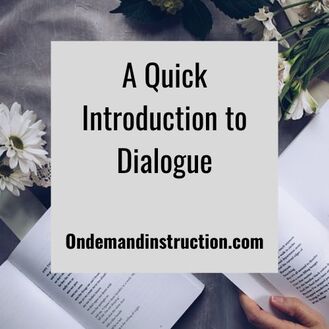 Writers use exposition to introduce their characters and reveal information about them, and they can also use dialogue. By putting characters into situations where they have to communicate, negotiate, and work through questions, we can show readers more depth to our characters. Not only that but we can show how our characters grow over time, just as people grow by communicating with others. When creating dynamic characters, we want to show different ways that our characters interact and change, and by demonstrating self-question, verbal debate, and social diplomacy, we can do that more thoroughly than with exposition alone. Rules of Dialogue When writing dialogue, follow these rules for accurate use of grammar, content, and punctuation. One character speaks in each paragraph. To demonstrate that another character is speaking, create a new paragraph. Indent each paragraph just s you would for exposition. Spoken dialogue should have quotation marks before the first work and after the last word. All punctuation related to the dialogue goes inside of the quotation marks. If a character speaks for longer than one paragraph, use one set of quotation marks, one when the character begins speaking and one when the character stops speaking. Use an em dash to show when a character is being interrupted while speaking. Include a speaker’s tag after the speech not before. Internal monologue (a character thinking to themselves without speaking) should be italicized not quoted. Considerations when Writing Dialogue
When writers use multiple pages of exposition without adding in dialogue, the effect on readers can be overwhelming. When writers use multiple pages of dialogue without adding in exposition, the effect on readers can be distracting and make it hard for readers to keep track of the story. Creating balance on the page allows your reader to enjoy the story without being overwhelmed by too much content or distracted by too little. Since every story is different, you may need to feel out the story and see how much dialogue can be written together before it needs to be broken up with exposition. Writing with dialogue creates white space. Readers tend to enjoy writing that contains white space because it gives the illusion that they are reading faster than they actually are. You can identify white space by opening any book around you. A page that has heavy paragraphs full of thick sentences that stretch from left margin to right margin is one with little white space; this lack of white space creates the illusion that the writing is heavier and takes more effort to read. Some writers use white space as a way to make their readers enjoy the writing more.
0 Comments
Leave a Reply. |
About the SiteWelcome, Writers! Archives
September 2023
|

 RSS Feed
RSS Feed